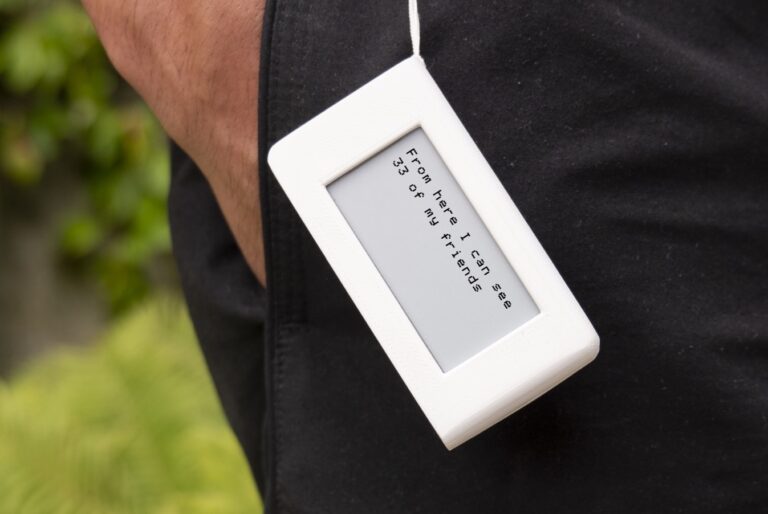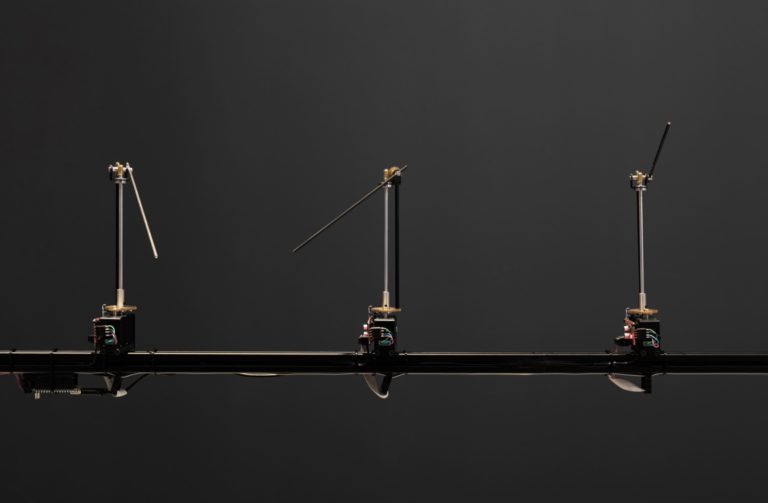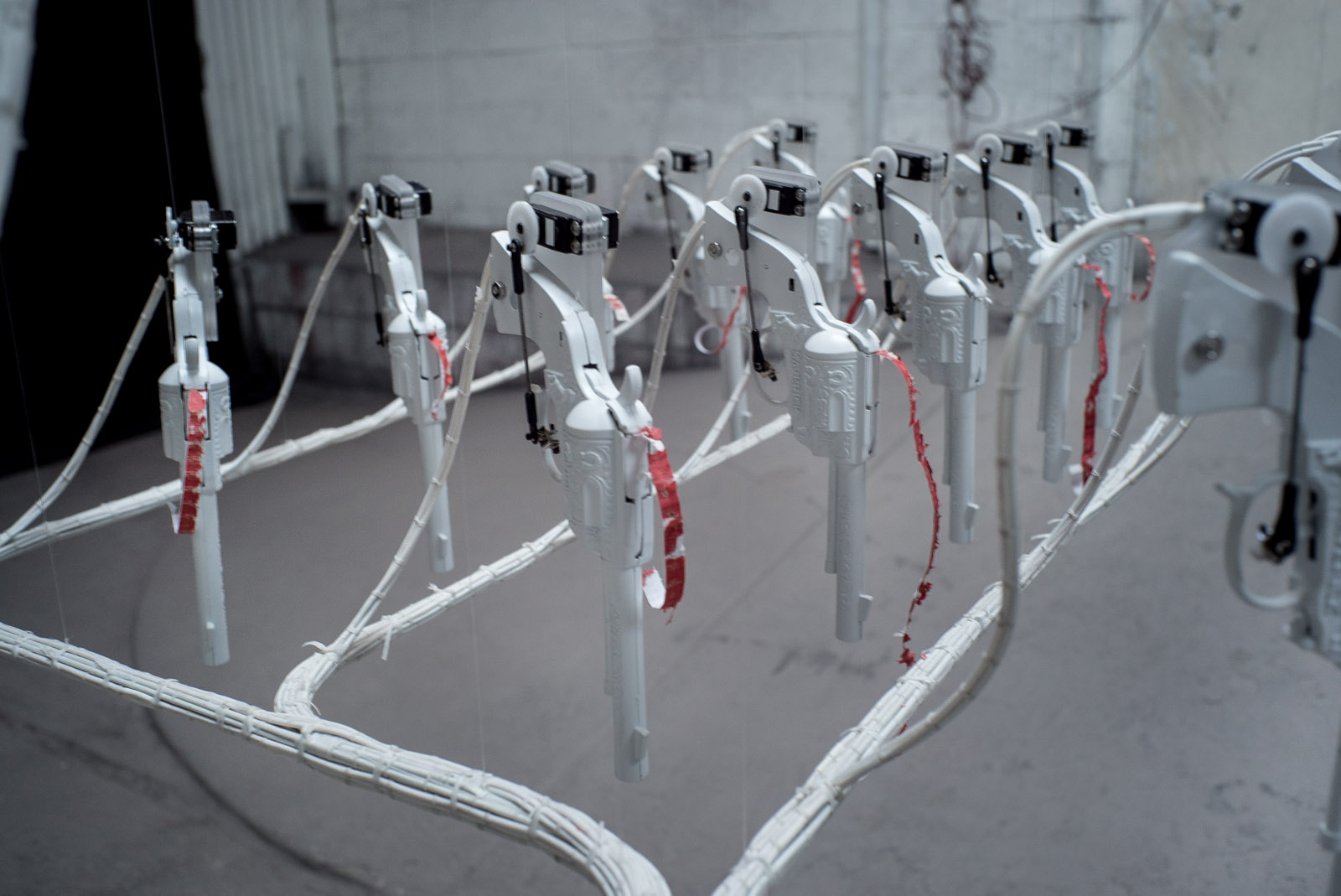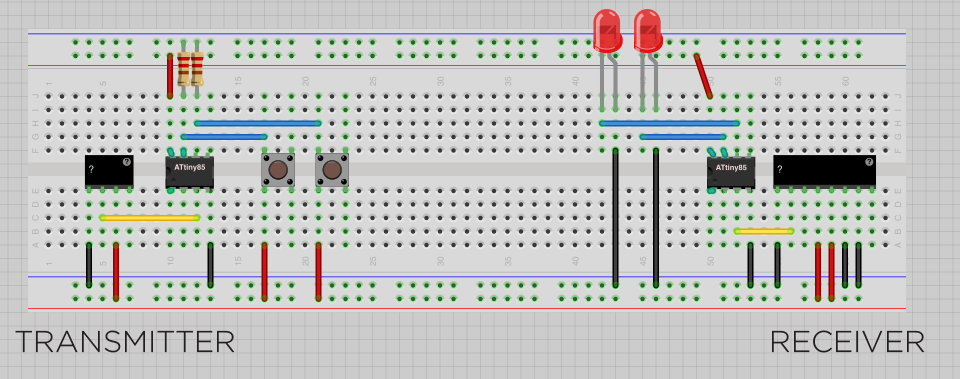
Created by Yuri Suzuki in partnership with Pentagram Design, and currently available for purchase from E&Y, The Ambient Machine is a 32 toggle switch sequencer with a variety of sounds and music to design your own background ambience.
Displaying search results
9 Results
Created by Yuri Suzuki in partnership with Pentagram Design, and currently available for purchase from E&Y, The Ambient Machine is a 32 toggle switch sequencer with a variety of sounds and music to design your own background ambience.

Algae Chorus is a sound installation that collaborates with living algae, in real time, transforming their movement and photosynthesis process into sounds. The algae utilize the audience’s collective carbon exhalations within the exhibition space, revealing the mutual dependencies between humans and photosynthetic organisms.

‘Invisible Network’ is a portable device that makes communication between machines perceptible and tangible. This device acts as a mediator between the user and the machines that surround him. Through its screen, it indicates the relations that it maintains with its personal environment.

Created by panGenerator, “Apparatum” is a custom made apparatus with digital interface that emits purely analogue sound. It is inspired by the heritage of the Polish Radio Experimental Studio – one of the first studios in the world producing electroacoustic music.

Created by Juliane Götz and Sebastian Neitsch of Quadrature and currently on view within the Ars Electronica exhibition at the DRIVE Volkswagen Group Forum in Berlin, “Positions of the Unknown” is an installation of 52 custom-made mini machines that, ever so slowly, track unidentified objects (possibly classified satellites) in Earth’s orbit.

Created by Noriyuki Suzuki, “Oh my ( )” is an installation that calls GOD in 48 languages using Twitter API. The machine monitors the Twitter timeline in real time and when a tweeted text includes a word, god ( in various languages ), speakers sound “oh my ( god in the tweeted language )” at the same time.

Created by Jonathan Fletcher Moore, Artificial Killing Machine is an autonomous mechanical installation that uses the public database on U.S. military drone strikes to visualise deaths of individuals that would otherwise be represented purely as statistical data.

Wouldn’t it would be nice to have something small, programmable, cheap, and power efficient that could do *some* of what an Arduino can do and had the same easy tools to use with it? Well there is: the ATTiny85!
Creativeapplications.Net (CAN) is a community of creative practitioners working at the intersection of art, media and technology.
Join us today by becoming a Member.
• Archive: Access thousands of projects, scores of essays, interviews and reviews.
• Publish: Post your projects, events, announcements.
• Discuss: Join our Discord for events, open calls and even more projects.
• Education: Tutorials (beginners and advanced) with code examples and downloads.
• Jobs Archive: Find employers who have recruited here in the past (over 1,000 jobs).
• Discounts: Special offers and giveaways (events, books and media).
• Ad-Free Reading: No advertisements or banners of any kind.
• Studios/Organisations: Read more about benefits here.